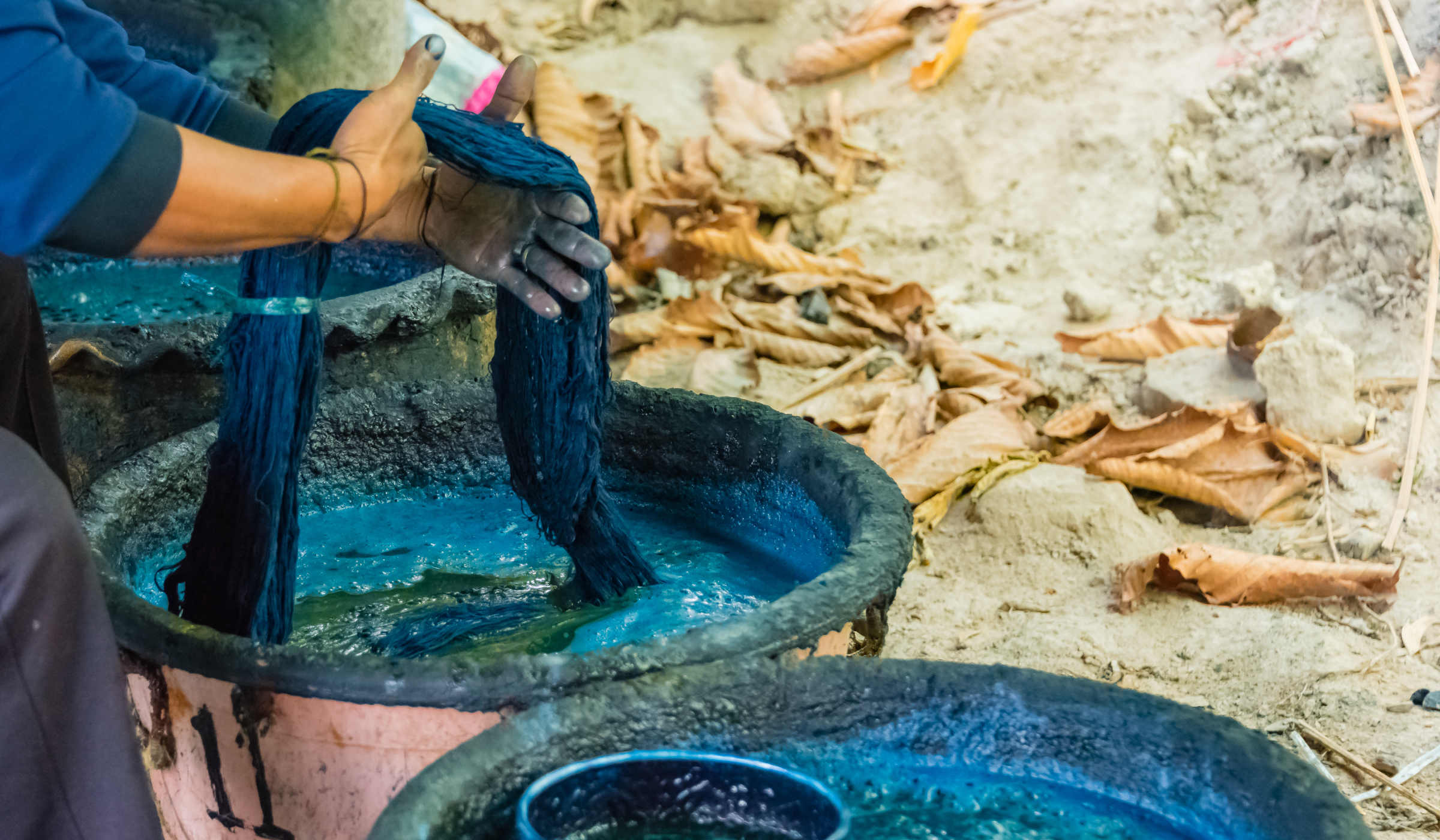Why are blue jeans blue? To answer this, we must take a look at the history of indigo.
Indigo has been with humankind for a long time. The Ancient Egyptians, Greeks, Romans, Sumerians, Indus Valley River Civilization, and Ancient Peruvians all grew indigo plants and used them to dye garments blue.
There are several plants that produce indigo dye but most notably are Indigo Tinctoria from India and Isatis Tinctoria or woad from Europe. Woad was the dominant source of blue dye in Europe until the introduction of Indigofera Tinctoria from Asia. To understand how it was surpassed, we must first understand the interesting, arduous, and seemingly mystical indigo dying process.
To create indigo dye, indigo plants must be boiled in water to release the plant’s dye molecules and enzymes. These molecules and enzymes mix to produce a greenish or yellowish mixture. Fabric is then submerged into this mixture and pulled out to oxidize. It is during oxidation that the fabric turns from yellow to green to blue, hence the mystical impression. To get deeper shades of blue, the item must be repeatedly dipped and removed, which can be an arduous task. That is because fibers retain more and more of the dye through oxidization—not submersion.
Compared to the Indigofera plant from Asia, woad produced a weaker blue dye with less colorfastness and was known to degrade fabrics. So, it was inevitable that garment makers would prefer Indigofera over woad. As Indigofera gained traction in Europe, European garment makers in Genoa, Italy and Nimes, France began producing durable yet comfortable trousers, often dyed blue. These would go on to influence the creation of blue jeans as we know them today.
Indigofera Tinctoria reigned as the leading blue dye until its synthetic counterpart was discovered in the 19th century. Today denim manufactures widely use synthetic indigo but although the formula may have changed, the timeless color remains, and blue is still the standard for many, many jeans.

Join The Discussion!